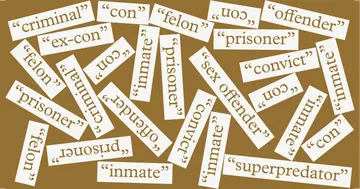Renay Lynch may or may not have played a role in the 1995 murder of 82-year-old Louise Cicelsky in Amherst, New York. Certainly a jury thought she did. In 1998, Lynch was tried and convicted of felony murder. Police and prosecutors told jurors that Lynch and her friend, Kareem Walker, went to Cicelsky’s home to rob her and that Walker ended up killing the elderly victim. Although Lynch was not accused of striking a blow that day, her reported presence at the scene, in the commision of a crime, made her guilty under New York law.
Or maybe not. Twenty years later, Lynch, through her attorneys, is asking a New York judge to authorize a new round of DNA testing of evidence collected from the crime scene and to require local officials to search for any other evidence that may be suitable for new testing . The original testing of DNA from the scene did not match Lynch or Walker, and Lynch now says that sophisticated new forensic testing might solve the case one way or another, especially if it finds a genetic match to someone on file in state and national databases.
The prosecutors in the case are unwilling to reopen the conviction. In their court papers they argue that no new DNA testing could undermine the jury’s conviction because the case itself was based on a confession and on the testimony of a jailhouse informant who told jurors that Lynch had admitted the crime.
Lynch, however, says that her confession was coerced and that the informant’s testimony against her is not credible. So far, this is pretty routine post-conviction stuff. But there are two wrinkles here that make this case notable. The first is that the lead detective in the case, Joseph LaCorte, the man who got Lynch to “confess,” appeared on the television show, “Women Behind Bars,” and told an interviewer in 2014 that he and his partner learned at some point that Walker was in Florida at the time of the Cicelsky murder. Walker was never charged in the killing, which suggests that LaCorte told the interviewer the truth. If this is so, then the prosecution’s trial theory-- that Walker was the killer and Lynch the accomplice-- cannot be true.
If Walker really was in Florida at the time of the crime, one would think prosecutors would want to know, one way or the other, what new DNA testing could tell them about Lynch. Which brings us to the other wrinkle here. If Lynch is to prevail with her pending motion she must convince the courts of New York, as the statute puts it, “that if a DNA test had been conducted on such evidence, and if the results had been admitted in the trial resulting in the judgment, there exists a reasonable probability that the verdict would have been more favorable to the defendant.” What the parties are fighting over is as much an existential question as it is a legal one: what constitutes a “reasonable probability”?
No matter where you land on the case it’s hard not to see the investigation here as odd. As prosecutors tell it the police still were processing the crime scene in May 1995 when Renay Lynch called the victim’s house, falsely identified herself as Cicelsky’s niece, and asked how her aunt was. This prompted a fateful visit to Lynch by Det. Joseph LaCorte. He asked why she had pretended to be Cicelsky’s relative and she told him that she wanted to know what was happening at the victim’s house because a friend had driven by and seen the police activity. Lynch told the detective that she had been renting her home from Cicelsky and had grown fond of her.
We will never know whether the police ultimately would have come across Lynch had she not interjected herself into the investigation. What actually happened, for the next 18 months or so, is that Lynch became a sort of informal informant for the police, someone in regular contact with LaCorte as part of his investigation into Cicelsky’s murder. At some point in the timeline here, the record is unclear, Lynch was arrested and charged with stealing a fur coat. She was threatened with prosecution. And then, police and prosecutors say, she confessed to being present at the scene of the Cicelsky murder.
The story she told that day implicated herself and Walker, at least that’s what prosecutors told jurors. In this account, Lynch had told Walker that she had to pay her rent, and he promptly suggested instead that they rob the elderly woman. Lynch went to Cicelsky’s front door and talked with her elderly friend while Walker entered through the back door. A violent struggle ensued in which Walker first hit the victim and knocked her unconscious and then stabbed her in the back. According to this account, which was presented to jurors at Lynch’s trial, Walker “came out running with blood all over him and carrying something.” He gave her $1,000, Lynch allegedly said, and told her that the victim “had deserved it.”
In Lynch’s version of events, however, LaCorte improperly fed her questions during that interrogation session. The police “needed her” to be placed at the crime scene in order to convict Walker of murder, they told her, and they promised her, a crack addict at the time, that she would not be prosecuted for anything if she helped them make their case. The police later said that Lynch’s account was so detailed and accurate that she could not have been giving them a false confession. She says now that she was simply regurgitating back to the cops details of the crime that had been published in local newspapers.
Lynch says that she meets the requirements for post-conviction DNA testing applied in New York. She does not need to show that a “favorable test result will wholly exonerate her or prove her ‘actual innocence,’” her lawyers contend, but rather “only that the testing sought carries “a reasonable potential for exculpation.” The test is satisfied, the defense argues, citing New York precedent, if for example “new evidence will merely impeach the credibility of a key witness, or when an alternate suspect confesses to the crime.”
“Of the 350 post-conviction DNA exonerations in the U.S. to date, the real perpetrator has been identified in 149 of the cases, often through a ‘cold hit’ to a previously unsuspected offender,” Lynch’s attorneys write. And even if the DNA tests only continue to exclude her DNA and Walker’s DNA from the crime scene, that satisfies the legal standard because of the improvement in testing techniques over the past 20 years.
Prosecutors reject all this. Lynch was not convicted of murder but felony-murder, prosecutors argue, which means it was enough that she was involved in the commission of one crime-- robbery-- when the murder took place. Lynch didn’t have to be inside the victim’s house, or doused in blood, to be guilty of a crime. So it would not be surprising, or particularly probative, prosecutors say, if new forensic testing were to confirm what the old testing showed; that Lynch’s DNA was not at the crime scene. The mere possibility that the “killer may have cut himself or herself” with the murder weapon, and thus left his or her own blood or other forensic evidence at a bloody crime scene, is simply too speculative to warrant new testing, state attorneys argue.
Twenty years ago, defendants like Lynch would have had far fewer avenues of recourse in cases like this. But In 2004, Congress passed the Innocence Protection Act of 2004 as part of a broader law aimed at justice reforms. The federal statute provided for post-conviction DNA testing in federal capital cases and allocated funds for states to provide similar testing. Today, every state has some sort of post-conviction DNA statute, although the standards vary wildly from state to state.
Alabama, for example , requires that “DNA testing of the specified evidence would, assuming exculpatory results, demonstrate the factual innocence of the applicant of the offense for which the petitioner was convicted.” A convicted defendant in Georgia must show that “DNA testing would raise a reasonable probability that the petitioner would have been acquitted if the results of DNA testing had been available at the time of conviction, in light of all the evidence in the case.” The law in Texas, meanwhile, applies only in cases where the defendant’s identity was an issue at trial and if the defendant “would not have been convicted if exculpatory results had been obtained.” Michigan’s standard uses the phrase “conclusive results” but does not define them.
It's hard to see any downside to new testing. If the results put Lynch inside that home, the state's conviction against her is strengthened. If the results point to someone else as the actual killer, then police will have finally solved what amounts to a cold case. And if the new testing comes back neutral, it likely won’t change Lynch’s conviction or confinement. For 20 years now, ever since she left that interrogation room, she’s been telling anyone who would listen that she is innocent. Maybe it’s time the state and its judges allowed her the chance to put up or shut up.

